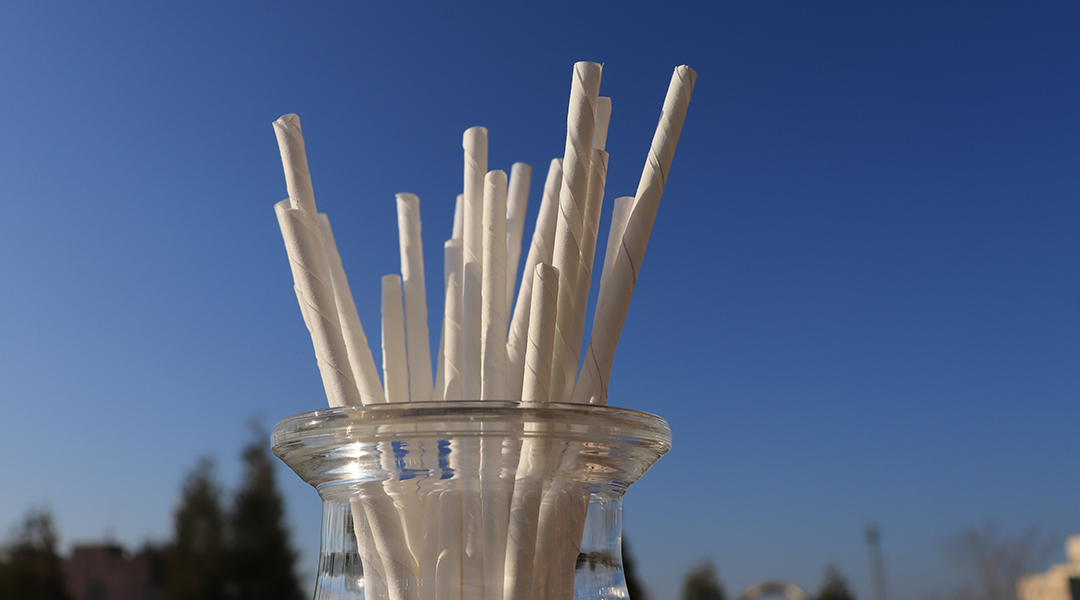A hot day and a cool drink, name a better combination — and with temperatures on the rise globally, a potentially more common scenario. Unfortunately, millions of us are being denied a delightful drinking experience due to the inability of paper straws to do the one job they need to; deliver liquid without absorbing it.
Soggy, limp straws have for too long been the only option to minimize plastic waste, but beverage lovers’ salvation is perhaps on its way as a group of researchers in Korea have tackled this infuriating problem and developed a straw for modern times.
Their claim is a paper straw that maintains stiffness and water resistance better than conventional paper straws. It’s completely biodegradable under aerobic conditions and in marine environments, where all straws seem to end up, and it produces less fizziness upon entering your favorite carbonated beverage.
If this already sounds too good to be true, wait. This new design relies on commercially available materials and can be produced using current straw manufacturing techniques, meaning this super straw could be delivering liquid to mouths sooner than you think.
Leveling up the paper straw
Jeyoung Park, professor of chemical and biomolecular engineering at Sogang University, sums up the issue with paper straws succinctly when he says, “The feeling of using paper straws is bad, and all people will agree.”
To remedy this, he teamed up with post doctoral researcher Ho Jung Kwak, principal scientist Dongyeop Oh from the Korea Research Institute of Chemical Technologyand, and Jun Mo Koo, professor at Chungnam National University, to fix the straw issue once and for all.
Paper straws in use now are in fact coated with biodegradable plastics, such as polybutylene succinate (PBS). However, as Oh explains, “The technology has been developed, but the coating ability is not so good.”
The coating doesn’t seal homogeneously, leaving holes for liquid to enter and ruin the drinking experience. Furthermore, these plastic coatings degrade, leading to microplastic pollution. To achieve a watertight seal between paper straw and plastic coating, the team, surprisingly, turned to another paper-like product: cellulose nanocrystals.
“The nano cellulose has the same chemical structure as paper,” said Oh. “Originally, it is the same material as paper.” This makes it more sustainable than some plastics and an excellent anchor between plastic and paper.
These nano-sized crystal materials are extracted from cellulose, a highly abundant organic compound. Cellulose is a major component of plants—wood is about half cellulose and cotton fiber about 90% cellulose. Cellulose is easily produced and used for many products already. Process it just a litter further, and you get the nanocrystals.
The team envisioned a PBS-cellulose nanocrystal (PBS/CNC) coated paper straw that could deliver the desired drinking experience in a sustainable way. The crucial step was to first modify the nanocrystals using a polybutylene succinate oligomer (BS) so the crystals were evenly distributed within the new BS-CNC coating. A paper straw is then dipped in this coating et viola! The perfect straw is born.
Rigorous testing
To prove this was indeed the future of straw technology, the team tested uncoated paper straws, PBS-CNC coated paper straws and the new PBS/BS-CNC coated paper straw.
Over vigorous rounds of testing that measured tensile strength, water resistance, sucking power, performance across temperatures, and fizziness in soft drinks, the PBS/BS-CNC coated straw continually outperformed its predecessors. Whatever the challenge the new straw won.
They tested resistance to lipids and oily liquids for those who drink cream-based coffee drinks. They subjected the straw to simulated chewing and then tested performance again, because let’s face it, we all chew our straws. The team left no angle unchallenged and went as far as stabbing potatoes with the straws to prove the robustness of their invention. The results of this rigorous straw competition can now be viewed in the journal Advance Science.
A realistic solution
Having a super straw that meets robust standards in the lab is one thing, but can it be commercially viable? According to Oh, the philosophy behind the groups research is feasibility and making sure their work translates to real-world solutions.
“We use commercially available materials,” he said, “PBS is already used as a coating for paper cups.”
CNCs are also commercially available and although they are currently more expensive than some petrochemical based substitutes Park believes the demand for high quality sustainable products plus the scalability of their design work in their favor.
To demonstrate the scalability Koo explained that while developing the straw, “We mimicked the processing of commercial paper straws, so we know we can commercialize these techniques.”
Reference: Jun Mo Koo, Jeyoung Park, Dongyeop X. Oh, et al., Biodegradable, water-resistant, anti-fizzing, polyester nanocellulose composite paper straw, Advanced Science (2022). DOI: 10.1002/advs.202205554

















